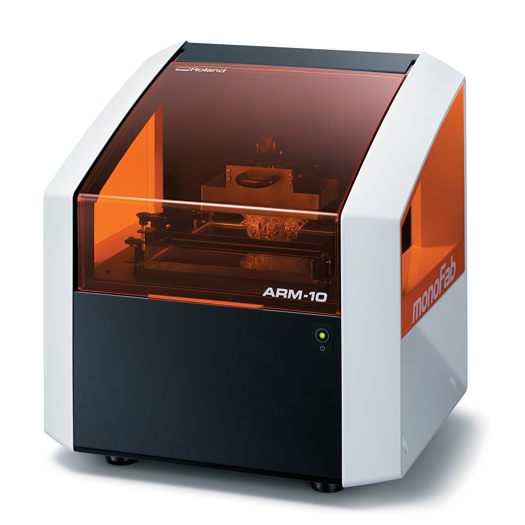The prototype, which was debuted last week at 3D technology trade show Formnext in Frankfurt, uses alumina powder to create complex ceramic objects.
Michel Van Vliet, general manager of Roland’s industrial business development unit, said the technology has been in development for around 18 months and the machine will take around another 18 months to come to market, as it is constantly being updated.
Van Vliet said he was unable to reveal price at this time.
This will be Roland’s second foray into the 3D market, following the release of its ARM-10 more than two years ago, but the company said this machine will target a “completely different market.”
The machine drops jets onto a bed of alumina powder and uses a water-based binder to layer the object being created.
After printing, the object is dried in an oven for around an hour, before it goes through a conventional 24-hour sintering process, which involves a heating and cooling sequence.
The fully-functional prototype can currently produce objects up to 300x250x150mm.
Van Vliet said: “The traditional process of developing a product is you bring the product to market when it is ready. We are working on products and want to test the market and see what is the real interest and identify the real customer.
“We know everything about large-format and UV printing but 3D is a different world and one of the reasons we did not release it earlier is we wanted to get it to manufacturing requirements.
“People coming here [to Formnext] are industrial manufacturers with different requirements and to understand them in a better way we need to showcase it and still have time to modify the product to fulfil these market requirements.”
He added that it would be unique in the market due to its binder-jetting technology being used instead of low-cost Fused Filament Fabrication (FFF).
Machines that use FFF generally support a wide range of materials but are priced at relatively unaffordable levels for SMEs, at up to €500,000 (£430,000).
Van Vliet accepted that technology will change drastically between now and when the printer is due for release but stressed that it will be constantly tweaked in line with developments in 3D.
In September, Roland launched two new printers in its wide-format eco-solvent TrueVis range.










